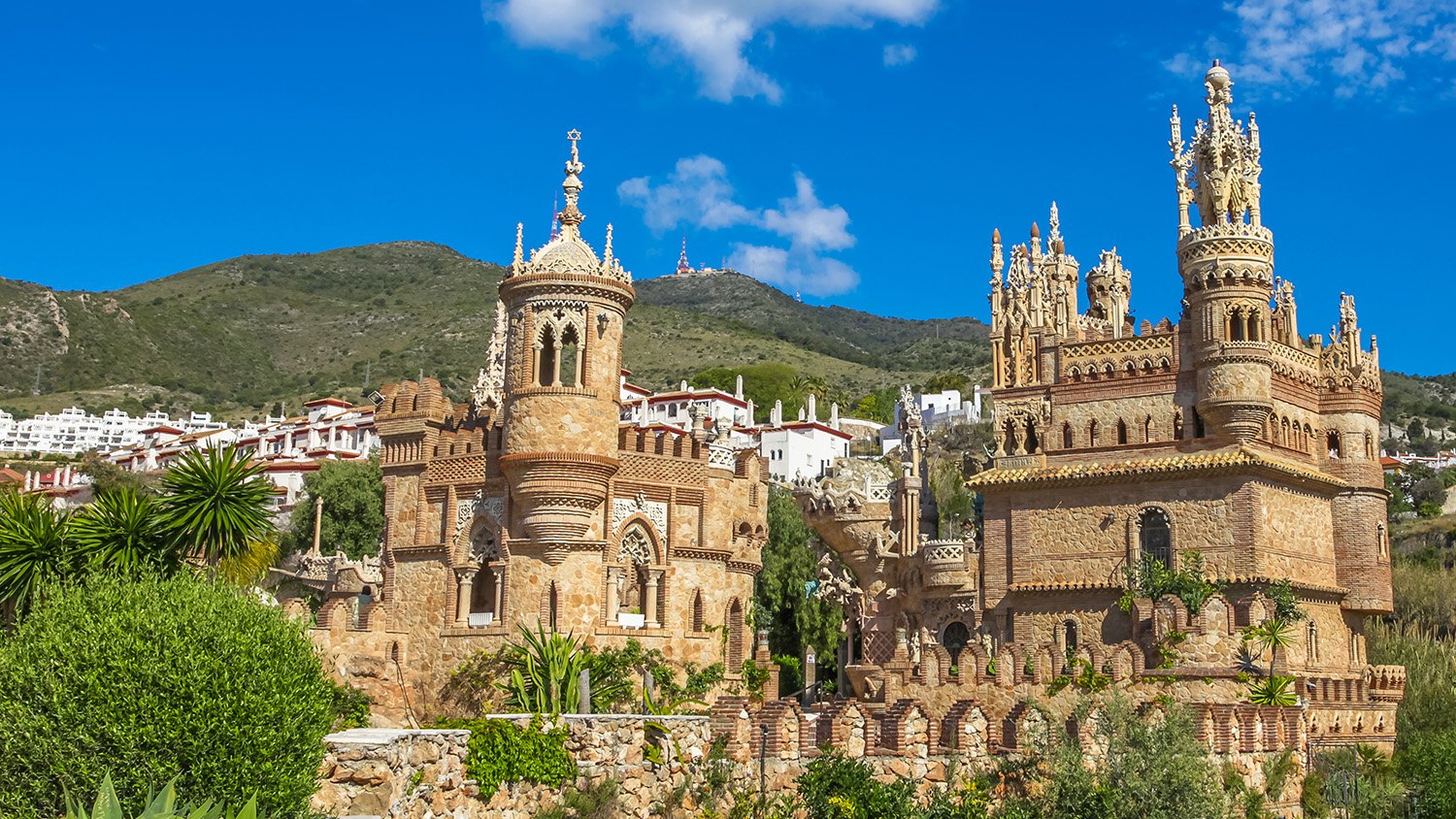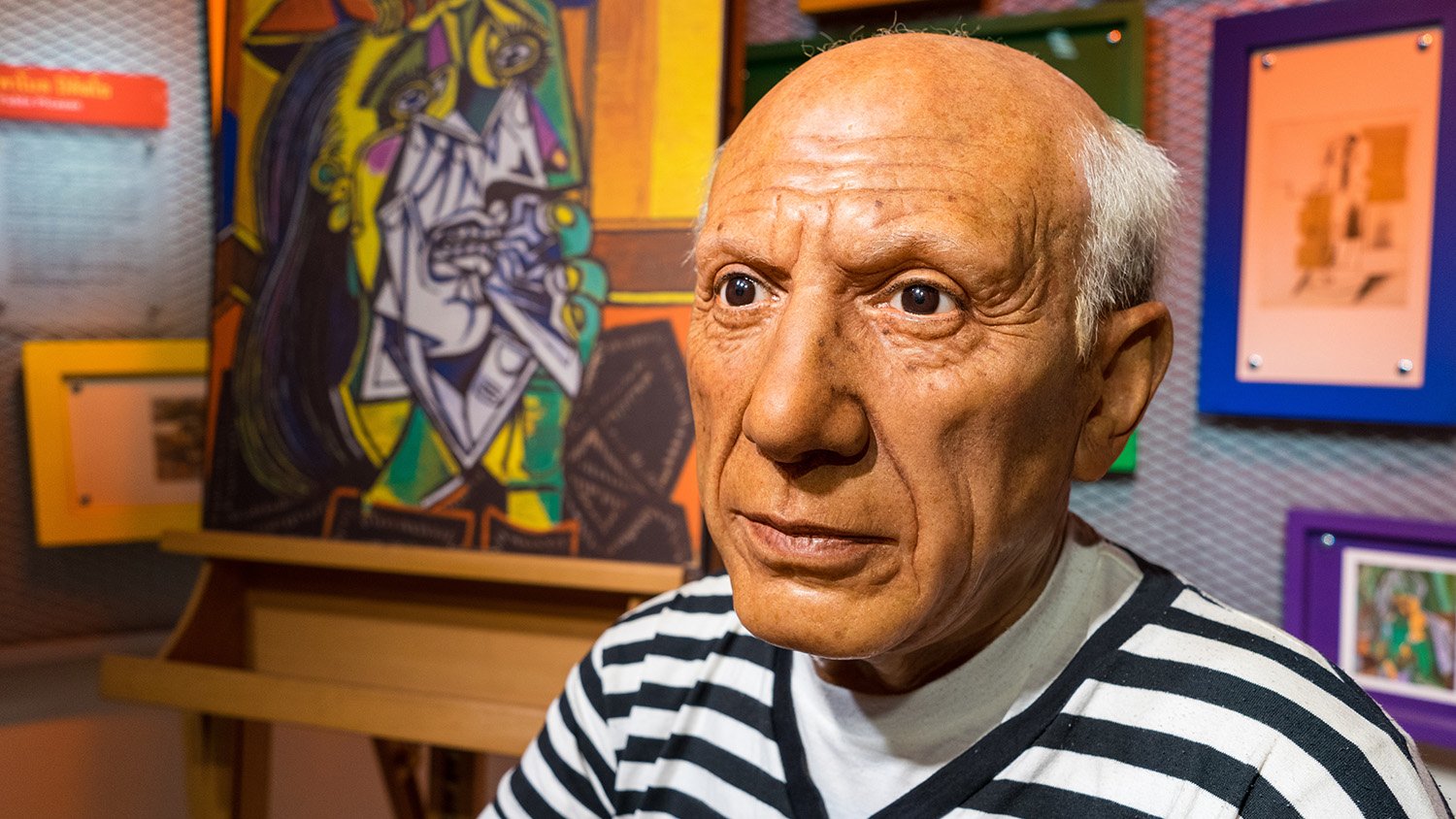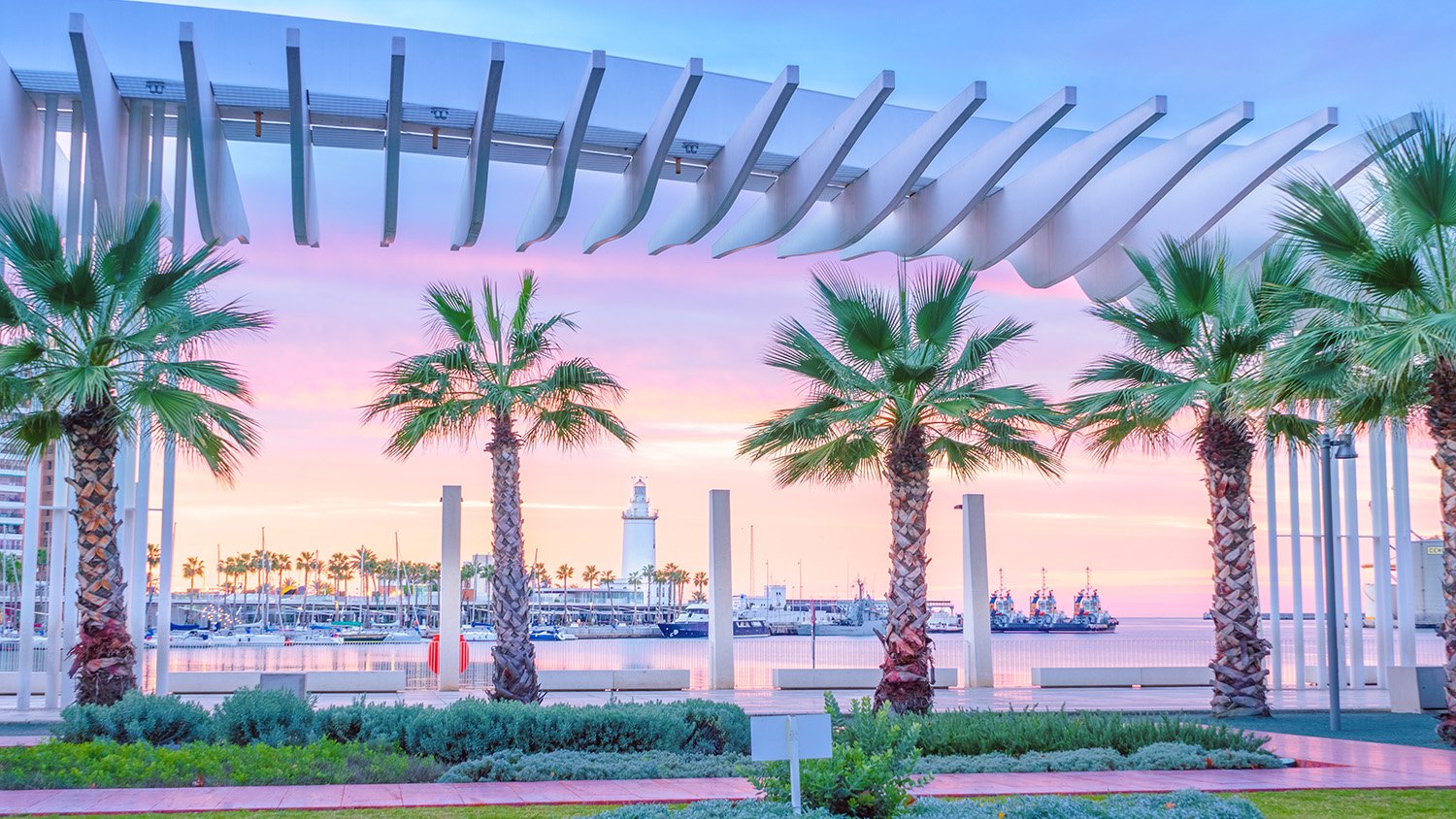The city itself is actually the main attraction if we're being honest, a place where deep-rooted history and cutting-edge cool somehow manage to coexist perfectly. Let me walk you through the 10 must-see spots that showcase what makes this Andalusian treasure so special.
1. Alcazaba
Alcazaba is a mind-blowing fortress from the 11th century that'll transport you straight back to Islamic Spain. It's hands-down the cultural heavyweight of the city, a ridiculously well-preserved citadel that shows off the best Islamic architecture you'll find from that period.
Wandering through its winding paths feels like stepping into another world. One minute you're admiring intricate carvings, the next you're gazing out at sweeping Mediterranean views that'll have your Instagram followers green with envy. The fortress is split into two walled sections (outer and inner citadel) that whisper stories from Málaga's past, back when it went by Mālaqah during its eight centuries of Islamic rule. The way they blended defensive necessities with gorgeous decorative touches? Absolutely genius.
- Location: C. Alcazabilla, 2, 29012 Málaga
- Best time to visit: Early morning or late afternoon to dodge the crowds and that brutal summer heat.
- Ticket prices: €3.50 for Alcazaba only, or €5.50 for a combo ticket with Gibralfaro Castle.
- Good to know: You can get in free on Sundays after 2 PM. Bring water but don't worry too much about shade, the site has plenty of fountains and shady spots to cool off. And wear comfy shoes unless you enjoy torturing your feet on uneven surfaces and stairs!

2. Málaga Cathedral
The locals call it "La Manquita" (the one-armed lady), and once you see it, you'll get why. This impressive cathedral is missing its south tower, giving it a quirky, unfinished look that's somehow more charming than if they'd completed the job. Construction of the Malaga Cathedral kicked off way back in 1528 and dragged on for over 250 years, talk about a lengthy project!
What's the deal with the missing tower? Well, the money earmarked for finishing it got diverted to finance wars in the Americas instead. But this isn't just another big church,it's a genuine landmark where locals meet up and hang out.
- Location: C. Molina Lario, 9, 29015 Málaga
- Best time to visit: Hit it up on weekday mornings to avoid the tour groups, or catch an evening concert if you're lucky, pure magic.
- Ticket prices: €10 for general admission
- Good to know: The panoramic city views are incredible.
3. Gibralfaro Castle
Perched on a hill like it owns the place (which, historically, it kind of did), Gibralfaro Castle dishes up the most jaw-dropping views in Malaga. Built in the 14th century, this place wasn't just for show, it was serious business, designed to protect the Alcazaba below.The connection between Gibralfaro and the Alcazaba runs deep. This fortress housed the soldiers who protected the Islamic rulers and added an extra security layer for the hugely important citadel below. The name comes from Arabic, "Jabal-Faruk" meaning "lighthouse mountain, because there used to be a lighthouse guiding ships safely to port. Walking along its ancient walls and watchtowers today, you can almost hear the echoes of armor clanking and soldiers keeping watch over the Mediterranean.
- Location: Camino Gibralfaro, 11, 29016 Málaga
- Best time to visit: Early morning before it gets sweltering, or late afternoon to catch a sunset that'll make you believe in magic again.
- Ticket prices: €3.50 for castle only, or €5.50 for a combo ticket with the Alcazaba.
- Good to know: There's a scenic but pretty brutal uphill path from the Alcazaba if you're feeling energetic. Or just hop on bus #35 to the top (no judgment here). There's a small museum inside with military artifacts, plus a café where you can reward yourself with a cold drink while soaking in those views.
4. Atarazanas Food Market
Even if you're not hungry (which, let's be real, is rare in Spain), Atarazanas Market is a must. This place hits all your senses at once in the best possible way. The building itself stops you in your tracks before you even step inside, a stunning structure with a dramatic stained-glass window and a 14th-century Moorish gate that's survived centuries of change.The building's had quite the career change over the years, serving time as a hospital and barracks before finding its true calling as a food lover's paradise. Once you're inside, the energy is infectious. Locals elbowing their way to their favorite vendors, fishmongers calling out the day's catch, the smell of fresh bread mixing with ripe fruits, it's Andalusia at its most authentic. You'll find everything from glistening seafood caught that morning to hams that have been curing for years, cheeses that smell like they might walk off on their own, and olives in more varieties than you knew existed.
- Location: C. Atarazanas, 10, 29005 Málaga
- Best time to visit: Weekday mornings when everything's fresh and buzzing, but not crazy packed. Closed Sundays, don't make that rookie mistake.
- Ticket prices: Free to enter (but good luck leaving without buying something delicious).
- Good to know: The small bars tucked inside the market are where locals actually eat. Order fried seafood or a Spanish tortilla made from ingredients purchased a few feet away. Food doesn't get fresher or more authentic than this.
5. Botanical Gardens
Known as "La Concepción", these gardens are what happens when a wealthy newlywed couple in 1855 decides to show off. Created by the Marquis and Marchioness of Loring, these 23 hectares of green paradise remained their private playground until 1994. Can you imagine keeping something this gorgeous all to yourself for over a century?The collection is mind-boggling: more than 50,000 plants and 2,000 different species from every corner of the planet. Water features cascade through the property, connecting ponds, greenhouses, and historic buildings via pathways that make you feel like you're wandering through someone's dream.
The "Around the World in 80 Trees" section is particularly cool, a global botanical tour without the jet lag. It's like traveling the world's forests in an afternoon.
- Location: Camino del Jardín Botánico, 3, 29014 Málaga
- Best time to visit: Spring for explosion of colors, or fall for comfortable temperatures without the crowds.
- Ticket prices: €5.20 for general admission, with discounts for students and seniors.
- Good to know: It's about 5 km from downtown, so grab bus #2. Definitely get a map when you arrive or you'll miss half the good stuff. And yes, bring bug spray in summer unless you enjoy being an all-you-can-eat mosquito buffet.
6. Roman Theatre
This Roman Theatre dates back to the 1st century BC. What's wild is that this place lay hidden underground for centuries until some construction workers stumbled upon it in 1951. The coolest part? Its location right below the Alcazaba creates this perfect timeline of Malaga history, Roman and Islamic Spain literally stacked on top of each other like the world's most impressive historical layer cake. This theater once seated 15,000 spectators, which makes your local multiplex seem pretty unambitious by comparison.
- Location: C. Alcazabilla, 8, 29015 Málaga
- Best time to visit: Late afternoon when the sunlight hits the ancient stones just right, or during summer performances if you want the full Roman experience.
- Ticket prices: Free! (Sometimes the best things in life actually are.)
- Good to know: You can easily combine this with your Alcazaba visit since they're practically neighbors. Keep an eye out for cultural events, watching a performance in the same seats Romans used two millennia ago is pretty mind-blowing.
7. Picasso Museum
Pablo Picasso is the local hero you simply can't escape. But the Picasso Museum, housed in the gorgeous Buenavista Palace, is so much more than hometown pride.
With nearly 300 works donated by Picasso's family, this collection spans his entire career and gives you an intimate look at his artistic evolution. From his early student days (when he could actually draw things that looked like things) to his later experimental periods, it's all here. What makes this collection special is its authenticity, these aren't just random Picassos gathered from around the world; they're pieces his family kept close, making this possibly the most genuine Picasso collection anywhere. Even if modern art usually leaves you scratching your head, seeing the range of one man's creativity in a single building is pretty remarkable.
- Location: Palacio de Buenavista, C. San Agustín, 8, 29015 Málaga
- Best time to visit: Weekday afternoons tend to be quieter, or try Sunday afternoons when entry is free for the last two hours.
- Ticket prices: €13 for general admission
- Good to know: Audio guides are definitely worth the extra few euros. No photos allowed inside, so you'll have to actually look at the art instead of through your phone (how retro).

8. Casa Natal de Picasso
If the Picasso Museum isn't enough for you, how about visiting the actual room where baby Pablo took his first breath? Located in Plaza de la Merced, this well-preserved 19th-century building is where the art world's revolutionary was born on October 25, 1881.There's something weirdly intimate about standing in the space where a genius was once just another squalling Malagueño baby with no idea he'd change art forever. The rooms are decked out in period style, showing you what a middle-class home looked like when little Pablo was crawling around it. Personal belongings, family photos, and some of his early artwork help paint the picture (pun absolutely intended) of his formative years. Casa Natal de Picasso now works as an artistic foundation hosting quarterly exhibitions, alongside that perfectly recreated 19th-century study room that looks like Pablo's dad just stepped out for a quick errand.
- Location: Plaza de la Merced, 15, 29012 Málaga
- Best time to visit: Weekday mornings for a more contemplative experience without the crowds.
- Ticket prices: €3 for general admission
- Good to know: The foundation often hosts cultural events beyond the exhibitions, including concerts and lectures.
9. Port of Malaga
Did you know you're looking at Spain's oldest continuously-operated port? This seaside hub has been welcoming ships since before anyone can remember, but it wasn't always the glamorous spot it is today. By the early 2000s, the port was showing its age, kind of like that one friend who really needs to update their wardrobe.Luckily, 2013 brought a massive cash injection that transformed the waterfront. Now, the Palm Garden of Surprises and Muelle Uno (Pier One) offer gorgeous promenades where you can stroll among palm trees, contemplate contemporary sculptures that may or may not make sense to you, and drop into shops, restaurants, and bars. While ships still come and go with their cargo, the area has become part of everyday Malagueño life. The ultra-modern Centre Pompidou, with its eye-catching glass cube, sits like a colorful exclamation point on the harbor, proving Malaga isn't just living in its historical past.
- Location: Puerto de Málaga, 29001 Málaga
- Best time to visit: Evening for sunset strolls and dinner with a view, or Sunday mornings when locals hit up the weekly market.
- Ticket prices: Free to wander the port (your wallet might not stay closed for long though).
- Good to know: Boat trips leave from here if you fancy seeing the Malaga coastline from a different angle. Summer evenings bring everything from live music to open-air cinema.

10. Málaga Museum
Housed in the former customs building (that gorgeous Palacio de la Aduana), the Málaga Museum is what happens when the Archaeological Museum and Fine Arts Museum decide to move in together. You could call it the Museum of Fine Arteology if you're feeling particularly clever.While technically still two separate collections under one roof, the arrangement makes perfect sense in this majestic seaside building. The archaeological side takes you on a wild ride from prehistoric times through Roman and Moorish periods, essentially a love letter to all things Málaga. Meanwhile, the fine arts section showcases Spanish paintings from the 19th century, with special attention to Andalusian artists and works by big names like Goya and (surprise, surprise) Picasso. The recent renovation of the building itself is worth appreciating, sometimes the container is as impressive as what it contains.
- Location: Plaza de la Aduana, s/n, 29015 Málaga
- Best time to visit: Weekday afternoons when tour groups are busy elsewhere.
- Ticket prices: Free for EU citizens, €1.5 for everyone else.
- Good to know: The museum regularly changes up their temporary exhibitions, so check their website to see what's new. Even if you've visited before, there might be something fresh to discover.
What else can you see in Malaga?
While these top 10 spots give you a solid introduction to Malaga, they're just the appetizer in this Andalusian feast. Take time to wiggle your toes in the sand at beaches like Malagueta or Pedregalejo, where locals soak up rays and devour fresh seafood at beachfront chiringuitos. Trust me, there's nothing quite like grilled sardines eaten with sea salt still on your skin.The city's food scene deserves its own expedition. Skip the tourist traps and dive into traditional tapas bars tucked away in the historic center. Or check out the innovative restaurants where young chefs are reinventing Andalusian classics with techniques their grandmothers would probably find suspicious.
Got extra time? Day trips from Malaga are easy. Hop on a bus to Ronda. Explore the white villages of the Axarquía region, where time seems to move more slowly and every view deserves a postcard. Or head to Granada to see the Alhambra, which makes even the most jaded travelers shut up and stare in wonder.
The Costa del Sol stretches out on both sides of Malaga like arms welcoming you to explore its hidden coves and charming coastal towns. But don't rush, Malaga has this way of making you slow down, sit at a plaza with a glass of local sweet wine, and wonder why you'd ever planned to leave in the first place.


Comments